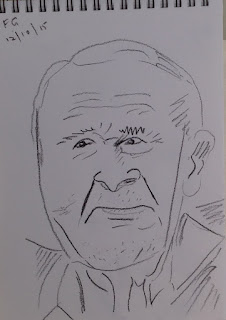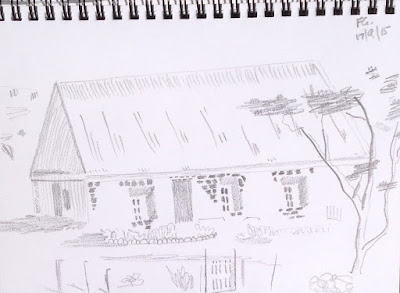I really have no excuse, except that we have been busy with the run-up to Christmas.
But last week I had a minor stroke (TIA) and after 24 hours in hospital am recovering well. I am having to learn to walk again, as the main effect of the incident was a tendency to drag my left foot, probably because that hip is weak from arthritis. So please foregive my silence!
---------
At the Boxing Day sales I spotted a book I was keen to read at a ridiculously low price: Passchendaele, by Nigel Steel and Peter Hart. I lost no time in starting to read it.
I have read a few books on the wars, especially the First World War, in the last months, but this is really the one I have been looking for, because of the knowledge that Passchendaele was the greatest disaster in New Zealand history, in terms of numbers killed.
By quoting extensively from reports, letters and diaries, Steel and Hart manage to paint a vivid picture of the fighting in Flanders between July and November of 1917. They show clearly the strategic issues including the disagreements among the Field Marshals and between them and the disunited politicians in London.
They also give a clear blow by blow account of the tactical movements in the battles as they unfolded, and the developments in planning, training and operations as the fight dragged on. They also convey vividly the experience of the front line, infantry, artillery, signallers, officers, Padres, stretcher-bearers, flyers, and so on. Especially one gets a clear, overwhelming impression of the terrible conditions imposed by the exceptionally bad weather over all but one of those months.
I cannot imagine how anyone with any shred of humanity, or morality, or Christianity could issue the orders to cause a war like the one described here, or could dream of carrying out such a command.
And it beggars belief that the German nation, with its heritage of philosophy, ethics and religion, could allow, even encourage the Nazi leadership to do so again within 20 years. Or that many in the Allied nations could be again Gung- ho about the second war.
Those who claim to be Christian and demand war in defence of their side have not the faintest idea of either war or Christianity. One of the most telling comments from the book is from a soldier who found a German prayer book in the mud and discovered a picture of Christ with a dying soldier in it was exactly the same as in his own prayer book.
War corrupts all humanity,
morality and religion. This book has certainly underlined my longstanding pacifist views.




















































